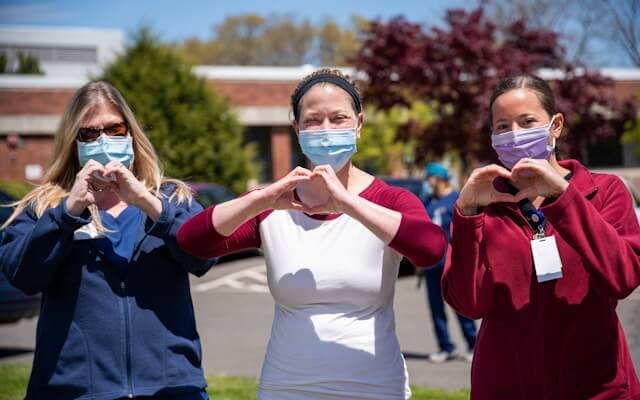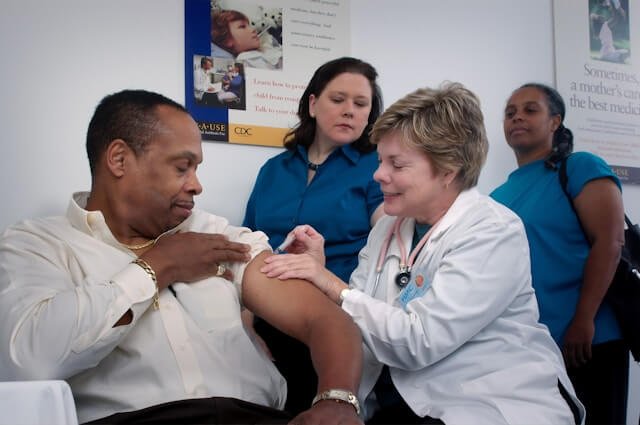Caring for bedridden patients requires specialised knowledge and skills to ensure their comfort, dignity, and overall well-being. Support techniques for bedridden patients encompass a wide range of practices designed to prevent complications, maintain mobility where possible, and provide quality care. Whether you’re a family caregiver, nursing student, or healthcare professional, understanding proper techniques is essential for delivering safe and effective patient care.
Understanding the Risks of Immobility?
When patients are confined to bed for extended periods, their bodies face numerous challenges that can significantly impact their health and recovery. Recognising these risks is the first step in implementing effective support techniques for patients who are bedridden.
Pressure Ulcers and Skin Breakdown
Pressure sores, also known as bedsores or pressure ulcers, develop when constant pressure reduces blood flow to specific areas of the body. These wounds typically form over bony prominences such as the tailbone, heels, hips, and shoulder blades. Without proper repositioning and care, minor skin irritation can progress to deep, painful wounds that are difficult to heal and prone to infection.
The development of pressure ulcers follows predictable stages, beginning with persistent redness and progressing to open wounds that may extend to muscle and bone. Prevention through regular repositioning and proper support techniques for bedridden patients is far more effective than treatment after ulcers have formed.
Muscle Atrophy and Weakness
Prolonged bed rest leads to rapid muscle deterioration, with patients losing up to 20% of their muscle mass within the first week of immobility. This muscle wasting, known as disuse atrophy, affects not only skeletal muscles but also the heart and respiratory muscles. The resulting weakness can significantly impact a patient’s ability to participate in their own care and eventual recovery.
Healthcare professionals who complete specialised training, such as comprehensive nursing and patient care diploma programs, learn evidence-based approaches to minimise muscle loss through proper positioning and gentle mobilisation techniques.
Cardiovascular and Respiratory Complications
Immobility affects circulation, leading to blood pooling in the extremities and an increased risk of blood clots. Deep vein thrombosis and pulmonary embolism represent serious, potentially life-threatening complications of prolonged bed rest. Additionally, weakened respiratory muscles and reduced lung expansion increase the risk of pneumonia and other respiratory infections.
Bone Density Loss and Joint Contractures
Without weight-bearing activity, bones begin to lose density within days of immobilization. This bone loss increases the risk of fractures and complicates eventual mobilisation efforts. Simultaneously, joints that remain in fixed positions develop contractures, where muscles and tendons shorten and stiffen, limiting the range of motion and causing pain.
Also Read: Top Master Care Management Courses for Nursing: Free Diploma in Nursing Leadership
Essential Repositioning Techniques
Proper repositioning forms the cornerstone of care for patients who are bedridden. These techniques, when performed correctly and consistently, can prevent many complications associated with immobility.
The Two-Hour Rule
Medical guidelines recommend repositioning bedridden patients at least every two hours during waking hours and every four hours during sleep. This schedule helps redistribute pressure, promote circulation, and prevent skin breakdown. However, some high-risk patients may require more frequent repositioning based on their individual needs and skin condition.
Side-to-Side Positioning
When turning a patient to their side, proper body mechanics protect both the patient and caregiver from injury. Begin by explaining the procedure to the patient and ensuring privacy. Position the patient’s arm across their chest and bend the knee on the side toward which they’ll be turning. Place one hand on the patient’s shoulder and the other on their hip, then gently roll them toward you in one smooth motion.
The 30-degree lateral position, where the patient lies partially on their side rather than directly on their hip, helps reduce pressure on bony prominences while maintaining comfort. Proper training in these techniques is crucial, and healthcare workers greatly benefit from structured educational programs, such as accredited nursing and patient care diplomas.
Supine and Prone Positioning
The supine position, with the patient lying on their back, is often the most comfortable but requires attention to pressure points at the heels, tailbone, and back of the head. Use pillows to maintain natural body alignment and reduce pressure on vulnerable areas.
Prone positioning, with the patient lying face-down, can benefit respiratory function in certain conditions but requires careful attention to airway management and pressure point protection. This advanced technique should only be performed by trained healthcare professionals.
Log Rolling Technique
For patients with spinal injuries or other conditions that require spinal alignment, the log rolling technique helps maintain proper body positioning during turns. This method requires multiple caregivers working in coordination to turn the patient into a single unit, preventing spinal twisting or bending.
Safe Lifting and Transfer Methods
Moving bedridden patients safely requires proper technique, adequate staffing, and often mechanical assistance. Poor lifting practices contribute to both patient injuries and caregiver back injuries, making proper training essential.
Manual Lifting Principles
Before attempting any manual lift, assess the patient’s weight, cognitive status, and ability to assist with the lift. Never attempt to lift a patient alone if they cannot bear weight or assist with the transfer. Use proper body mechanics by keeping your back straight, bending at the knees, and engaging core muscles.
The draw sheet method allows multiple caregivers to lift and reposition patients safely. Position a sheet or specialised transfer pad under the patient from the shoulders to the hips, then coordinate the lift with clear communication and synchronised movement.
Pivot Transfers
For patients with some weight-bearing ability, pivot transfers enable movement from a bed to a chair or wheelchair. Position the patient at the edge of the bed with feet flat on the floor, then support them as they stand and pivot to the new position. This technique maintains patient dignity while building confidence and strength.
Healthcare professionals who complete specialised mobility training, such as comprehensive nursing and patient care certification programs, learn to accurately assess patient capabilities and choose the appropriate transfer methods for each situation.

Mechanical Aids and Equipment
Modern healthcare facilities rely increasingly on mechanical aids to move patients safely while reducing physical strain on caregivers. Understanding when and how to use these devices is essential for providing optimal care.
Patient Hoists and Lifts
Ceiling-mounted and mobile hoists offer safe alternatives to manual lifting for patients who are dependent. These devices utilise slings that support the patient’s body weight during transfers, thereby reducing the risk of injury for both patients and caregivers. Different sling types accommodate various patient needs, from full-body support to toileting slings that maintain dignity during personal care.
Proper training in hoist operation is mandatory in most healthcare settings. Comprehensive nursing and patient care diploma programs cover equipment operation, safety checks, and troubleshooting to ensure the competent use of these vital tools.
Slide Sheets and Transfer Boards
Slide sheets reduce friction during lateral transfers, allowing caregivers to reposition patients with less effort and reduce shearing forces on the patient’s skin. These lightweight fabric sheets work in pairs, with the smooth surfaces sliding against each other to facilitate movement.
Transfer boards provide a bridge between surfaces during seated transfers, enabling patients to slide smoothly from a bed to a wheelchair or between chairs. These devices are most effective for patients with good upper body strength and stable sitting balance.
Positioning Aids and Cushions
Specialized cushions and wedges help maintain proper body alignment and reduce pressure on vulnerable areas. Memory foam cushions, gel pads, and air-filled devices distribute weight more evenly than standard pillows, thereby reducing the risk of pressure ulcers.
Heel protectors, elbow pads, and other positioning devices prevent skin breakdown at common pressure points. These relatively inexpensive tools can prevent costly complications when used consistently as part of comprehensive patient care.
Also Read: Nursing Code of Ethics and Responsibilities for Registered Nurses
Educational Resources and Training Programs
Proper care of bedridden patients requires ongoing education and skill development. Healthcare facilities increasingly recognize that investing in staff training improves patient outcomes while reducing workplace injuries and liability.
Structured Learning Modules
Comprehensive training programs break down complex care techniques into manageable learning modules. These programs typically cover anatomy and physiology, risk assessment, hands-on techniques, and the operation of equipment. The structured approach ensures consistent competency across all healthcare team members.
Many healthcare workers find online learning platforms particularly valuable for continuing education. Accredited nursing and patient care diploma courses offer flexible scheduling that accommodates shift work while providing thorough, evidence-based instruction in patient mobility techniques.
Competency Assessment and Certification
Regular competency assessment ensures that healthcare workers maintain their skills and stay current with best practices. Many employers require annual recertification in patient handling techniques, recognizing that skills can deteriorate without regular practice and reinforcement.
Certification programs validate the knowledge and skills of healthcare workers, providing professional recognition while ensuring patient safety. These credentials often lead to career advancement opportunities and increased earning potential.
Hands-On Practice and Simulation
While theoretical knowledge provides the foundation for safe patient care, hands-on practice develops the muscle memory and confidence needed for real-world application. Many training programs incorporate simulation labs where learners can practice techniques on mannequins before applying them to actual patients.
Peer mentoring and supervised practice help new healthcare workers develop competency while ensuring patient safety. Experienced staff members serve as role models and resources, sharing practical tips and problem-solving strategies that have been developed through years of practice.
Patient Comfort and Dignity
Beyond the technical aspects of positioning and movement, support techniques for bedridden patients must address their emotional and psychological needs. Maintaining patient dignity and comfort plays a significant role in promoting healing and overall well-being.
Communication and Consent
Always explain procedures before beginning, even with unconscious or cognitively impaired patients. Clear communication reduces anxiety and helps patients participate in their care when possible. Obtain consent before touching or moving patients, respecting their autonomy and personal boundaries.
Use positioning changes as opportunities for interaction and assessment. Check for pain, discomfort, or skin changes while providing emotional support and encouragement. These moments of connection can have a profound impact on patient morale and cooperation.
Pain Management During Movement
Many bedridden patients experience pain that worsens with movement. Coordinate positioning changes with pain medication schedules when possible, allowing medications to take effect before procedures. Use slow, gentle movements and watch for signs of discomfort or distress.
Healthcare professionals who complete comprehensive training programs, such as specialised nursing and patient care diplomas, learn to recognise pain indicators in various patient populations and adapt their techniques accordingly.
Privacy and Modesty
Protect patient privacy during all positioning and transfer activities. Use sheets and blankets to cover patients appropriately, and limit the number of people present during procedures. These considerations show respect for patient dignity while maintaining professional care standards.
Create a comfortable environment by adjusting room temperature, lighting, and noise levels when possible. Small gestures, such as providing warming blankets or playing preferred music, can significantly enhance the patient experience during care activities.
Safety Considerations and Risk Management
Patient safety must remain the primary concern during all mobility and positioning activities. Understanding potential risks and implementing appropriate safeguards protects both patients and caregivers from harm.
Fall Prevention
Even bedridden patients face a risk of falling during transfers and positioning changes. Always ensure bed rails are raised when appropriate, keep call lights within reach, and maintain clear pathways around the bed. Use non-slip footwear for patients who bear weight during transfers.
Assess each patient’s fall risk using standardised tools and implement appropriate preventive measures. High-risk patients may require additional safety measures such as bed alarms, increased supervision, or specialized equipment.
Infection Control
Proper hand hygiene, both before and after patient contact, helps prevent the spread of healthcare-associated infections. Use appropriate personal protective equipment when indicated, and follow facility protocols for cleaning and disinfecting equipment.
Consider each patient’s infection status when planning care activities. Patients with contagious conditions may require isolation precautions that affect positioning schedules and equipment use.
Equipment Safety and Maintenance
Regular inspection and maintenance of mobility equipment ensures safe operation and prevents mechanical failures that could harm patients or staff. Follow manufacturer guidelines for weight limits, operating procedures, and maintenance schedules.
Training programs, including comprehensive nursing and patient care certification courses, emphasise the importance of conducting equipment safety checks and accurately documenting maintenance activities.

Documentation and Care Planning
Accurate documentation of positioning changes, patient responses, and skin condition supports continuity of care and helps identify developing problems before they become serious complications.
Positioning Schedules and Logs
Maintain detailed records of positioning changes, including time, position, and patient response. These logs help ensure consistent care across shifts and provide evidence of appropriate interventions for regulatory compliance.
Use standardised documentation tools when available, and ensure that all care team members understand the recording requirements. Consistent documentation supports quality improvement efforts and helps identify trends in patient conditions.
Skin Assessment and Wound Care
Document skin condition during each positioning change, noting any areas of redness, breakdown, or improvement. Photograph wounds when appropriate, following facility policies for patient privacy and consent.
Communicate skin changes promptly to appropriate healthcare providers, and adjust care plans based on assessment findings. Early intervention can prevent minor skin irritation from progressing to serious pressure ulcers.
Also Read: How to Learn Nursing Leadership Online: Free Nursing Leadership Course
Building Competency Through Professional Development
Healthcare workers who care for bedridden patients benefit from ongoing professional development that keeps them current with best practices and emerging technologies in patient mobility.
Continuing Education Requirements
Many healthcare licenses require continuing education credits in relevant topics, including patient safety and mobility techniques. These requirements ensure that healthcare workers maintain current knowledge throughout their careers.
Professional organisations often provide educational resources and networking opportunities that support career development and enhance patient care skills. Active participation in professional development demonstrates a commitment to excellence in patient care.
Specialization and Career Advancement
Healthcare workers who develop expertise in patient mobility often find opportunities for career advancement in areas such as wound care, rehabilitation, or staff education and training. Specialised training programs, such as accredited nursing and patient care diplomas, provide the foundation for these career paths while enhancing current job performance.
Advanced certifications in areas such as wound care nursing or rehabilitation therapy build on basic mobility skills and open doors to higher-level positions with increased responsibility and compensation.
Conclusion
Support techniques for bedridden patients encompass a comprehensive approach to care that addresses the physical, emotional, and safety needs of these individuals. From basic repositioning to complex mechanical transfers, these skills require ongoing education and practice to maintain competency.
Healthcare workers who invest in professional development through structured training programs demonstrate their commitment to providing excellent patient care while protecting their own health and career prospects. The knowledge and skills gained through comprehensive education, such as accredited nursing and patient care diploma programs, benefit both caregivers and patients by improving outcomes and reducing complications.
As healthcare continues to evolve, the importance of proper patient mobility techniques continues to increase. By mastering these essential skills and staying current with best practices, healthcare professionals can make a meaningful difference in the lives of their most vulnerable patients while building rewarding careers in the field of healthcare.
The investment in proper training pays dividends in improved patient outcomes, reduced workplace injuries, and enhanced professional satisfaction. Whether you’re just beginning your healthcare career or seeking to enhance existing skills, developing expertise in support techniques for bedridden patients represents a valuable investment in your professional future and the well-being of those in your care.




